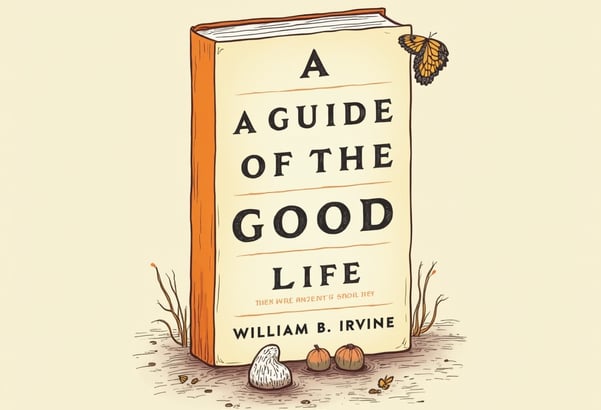A Guide to the Good Life: The Ancient Art of Stoic Joy - Book Summary
"A Guide to the Good Life: The Ancient Art of Stoic Joy" is a thought-provoking book by William B. Irvine that explores the practical wisdom of Stoic philosophy and how it can be applied to modern life. The book offers a compelling argument for the value of Stoicism as a guide to living a fulfilling and joyful life.
11/5/20242 min read


The Key Principles of Stoicism
Irvine begins by outlining the key principles of Stoicism, including the importance of distinguishing between what is within our control and what is not, the value of living in accordance with reason and virtue, and the need to cultivate inner tranquility and resilience in the face of life's challenges.
He argues that by embracing these principles, we can learn to live more intentionally and purposefully, focusing on what truly matters and letting go of the things that do not.
Practical Exercises for Cultivating Stoic Joy
Throughout the book, Irvine offers practical exercises and techniques for cultivating Stoic joy and resilience. These include practices such as negative visualization, in which we imagine losing the things we value in order to appreciate them more fully, and self-denial, in which we voluntarily forego certain pleasures in order to strengthen our self-control and independence.
Irvine also emphasizes the importance of developing a sense of gratitude and contentment, even in the face of adversity. By learning to appreciate what we have and to find joy in the present moment, we can cultivate a deep sense of inner peace and fulfillment.
Applying Stoicism to Modern Life
One of the strengths of "A Guide to the Good Life" is its emphasis on the practical application of Stoic principles to modern life. Irvine offers numerous examples and anecdotes that illustrate how Stoicism can be used to navigate the challenges and complexities of the 21st century.
Whether dealing with stress and anxiety, coping with loss and grief, or simply seeking to live a more meaningful and purposeful life, Irvine argues that Stoicism offers a powerful set of tools and techniques for achieving greater resilience, joy, and fulfillment.
Conclusion
"A Guide to the Good Life: The Ancient Art of Stoic Joy" is a compelling and accessible introduction to the practical wisdom of Stoic philosophy. By offering a clear and concise overview of Stoic principles, along with practical exercises and techniques for applying them to modern life, Irvine has created a valuable resource for anyone seeking to live a more intentional, resilient, and joyful life.
Whether you are new to Stoicism or a seasoned practitioner, "A Guide to the Good Life" is a must-read for anyone interested in exploring the enduring relevance and power of this ancient philosophy.
Waste no more time arguing about what a good man should be. Be one - Marcus Aurelius
We suffer more often in imagination than in reality - Seneca
Wealth consists not in having great possessions, but in having few wants - Epictetus
